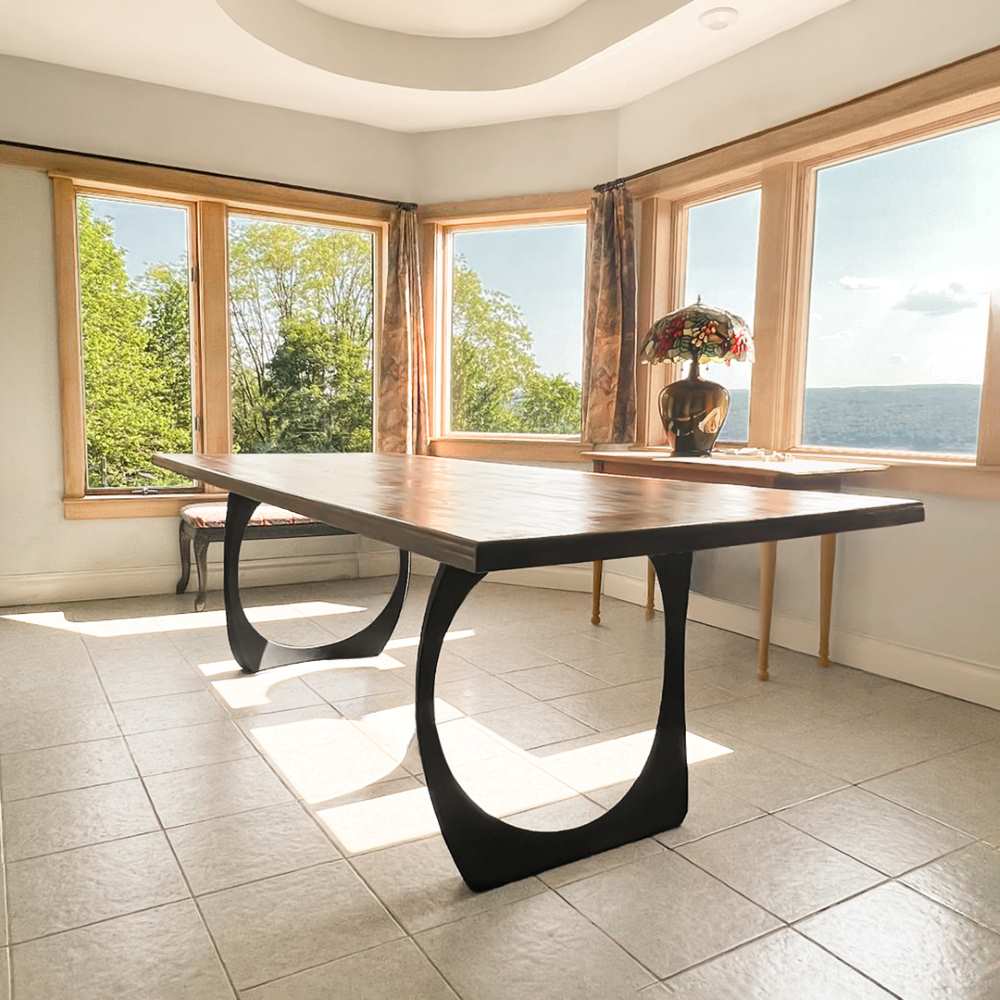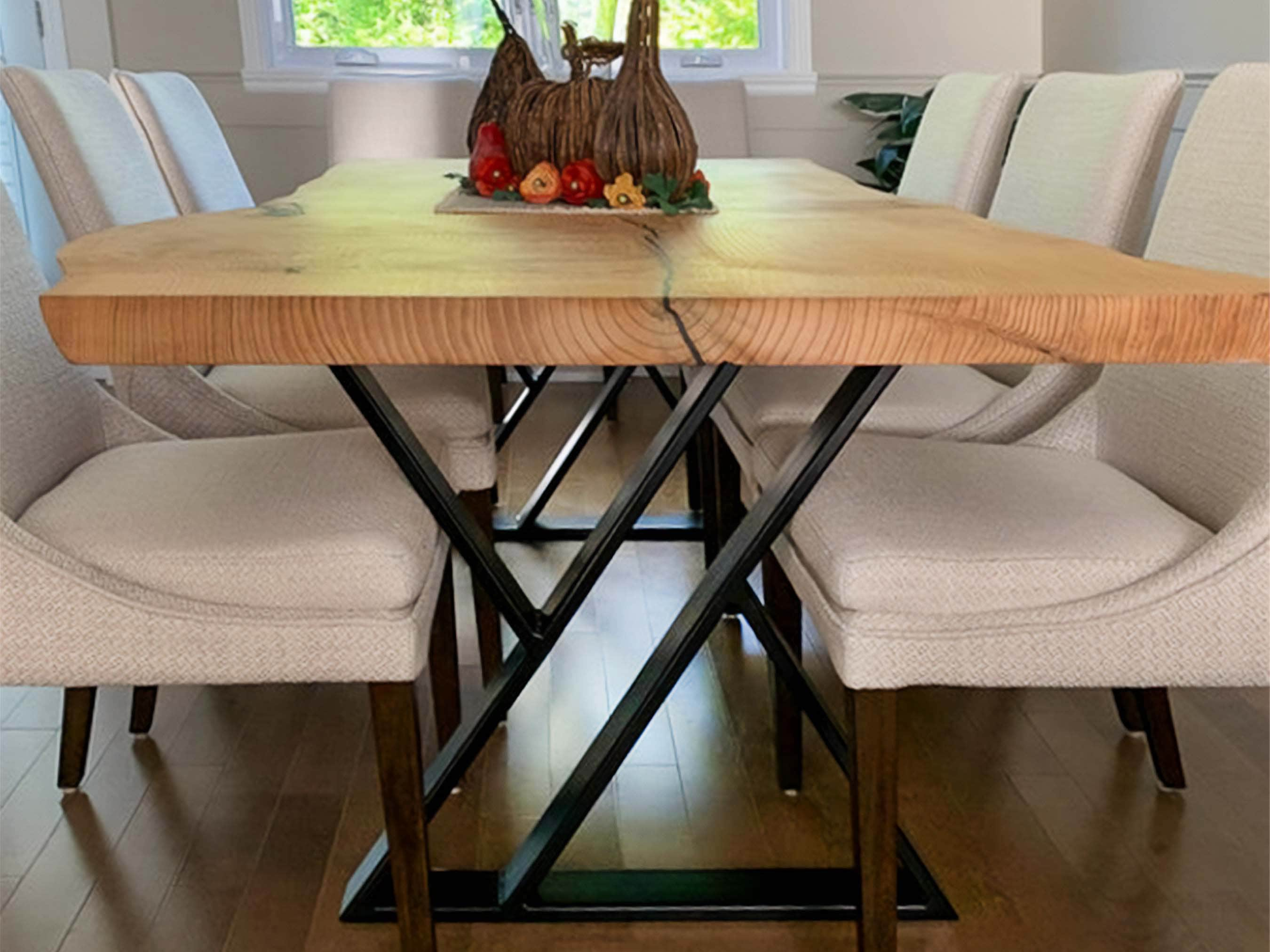From Typical to Modern: Discover the Ideal Dining-room Table Legs for Your Design
While traditional designs such as cabriole and transformed legs evoke a feeling of ageless refinement, modern designs like barrette and geometric options offer an opportunity for striking aesthetic interest. As you think about these components, the question continues to be: how can you perfectly incorporate these varied leg designs to create a harmonious eating experience?
Recognizing Table Leg Styles
The variety of eating room table leg styles can dramatically affect both the aesthetics and performance of the area. Each leg design contributes one-of-a-kind visual components and useful attributes, satisfying varied layout choices and usage demands. Understanding these styles is vital for picking the appropriate eating table that lines up with your overall interior decoration vision.
For example, tapered legs offer a tidy, traditional appearance that can improve a space's style, while stand bases give stability and optimize legroom, making them excellent for smaller sized areas. Barrette legs, a characteristic of mid-century modern style, present an industrial panache, allowing for a ventilated, open feeling. Trestle legs stimulate rustic appeal, providing durable support and a feeling of eternity.
Wood legs can bring heat and texture, whereas metal alternatives often share a streamlined, contemporary ambiance. Eventually, understanding table leg designs is important for producing a natural dining location that reflects personal design while ensuring functionality and convenience.
Traditional Table Leg Options
When choosing dining-room table legs, traditional alternatives typically embody classic elegance and workmanship. These layouts mirror a rich heritage and a commitment to high quality, making them excellent for those that value traditional aesthetics.
One of one of the most renowned traditional leg designs is the cabriole leg, characterized by its stylish rounded form. This layout often features ornamental carvings and is most frequently found in Queen Anne and Chippendale furnishings. An additional preferred choice is the transformed leg, which boasts a series of smooth, rounded forms that provide a traditional appearance while maintaining security.
In addition, the straight leg, while easy, supplies a durable and basic structure that can mix seamlessly with a range of tabletop designs. For those attracted to ornate detailing, claw-and-ball feet legs evoke a sense of magnificence and can work as a magnificent focal point in any dining room.
Lastly, pedestal bases, although not purely legs, give an alternative traditional option that enables adequate legroom and can be beautifully sculpted. Each of these standard leg styles adds to the overall ambiance of a dining-room, weding function with aesthetic allure.

Modern Table Leg Layouts
Modern table leg layouts offer a diverse variety of designs that emphasize ingenious materials and clean lines. These designs frequently focus on performance while acting as striking focal factors within an eating area. Minimal looks are widespread, with legs crafted from materials such as steel, glass, and crafted timber, which add to a contemporary and ventilated feeling.
One popular layout is the hairpin leg, defined by its slim, conical framework that gives stability without frustrating the tabletop (dining room table legs). This design is typically discovered in mid-century modern furnishings and can effortlessly enhance numerous eating table shapes. One more fad is the use of geometric forms, where legs might take on angular or asymmetrical kinds, adding visual passion and a touch of artistry

Mixing Designs for Special Areas
Typically, house owners seek to create unique eating rooms that show their personal style by mixing numerous style components. This approach enables the incorporation of diverse aesthetics, leading to an unified yet distinctive atmosphere. Combining a rustic wood table with sleek, modern metal legs can produce an attractive comparison that raises the space's total allure.
Additionally, integrating vintage table legs with contemporary table tops can stimulate a feeling of history while maintaining a modern-day sensibility. Such mixes not only display private preference however also urge creativity, permitting house owners to curate a space that feels both individual and inviting.
Shade plays an important role in this blending procedure; choosing table legs that complement or contrast with the existing color pattern can enhance visual rate of interest. As an example, whitewashed legs can soften the boldness of a dark table surface, developing a balanced aesthetic.
Tips for Picking the Right Legs
Selecting the right table legs is vital for accomplishing both performance and aesthetic charm in your eating area. Begin by thinking about the general style of your room. Typical settings gain from legs that include intricate carvings or turned designs, while modern spaces may call for sleek, minimalist designs.
Following, assess the height and stability of the legs. dining room table legs. Common table vary in between 28 to 30 inches in elevation, so make certain the legs complement this measurement for convenience. Additionally, robust materials, such as hardwood or metal, can improve security and durability
Examine the leg form also-- alternatives consist of right, tapered, or stand layouts. Straight legs supply a timeless appearance, while conical legs can include a touch of style. Pedestal bases provide ample legroom and are perfect for smaller spaces.
Conclusion
In recap, choosing the optimal dining area table legs needs careful factor to consider of both modern and typical styles. By harmonizing leg design, height, and product with the general décor, a cohesive and welcoming atmosphere can be attained.
The variety of dining area table leg styles can considerably affect both the aesthetics and capability of the area. Ultimately, click this comprehending table leg styles is click over here now crucial for developing a cohesive eating area that mirrors personal design while guaranteeing practicality and convenience.One of the most famous traditional leg designs is the cabriole leg, identified by its graceful rounded form. Straight legs provide a timeless look, while tapered legs can include a touch of elegance.In summary, picking the optimal eating room table legs needs mindful consideration of both modern and conventional designs.